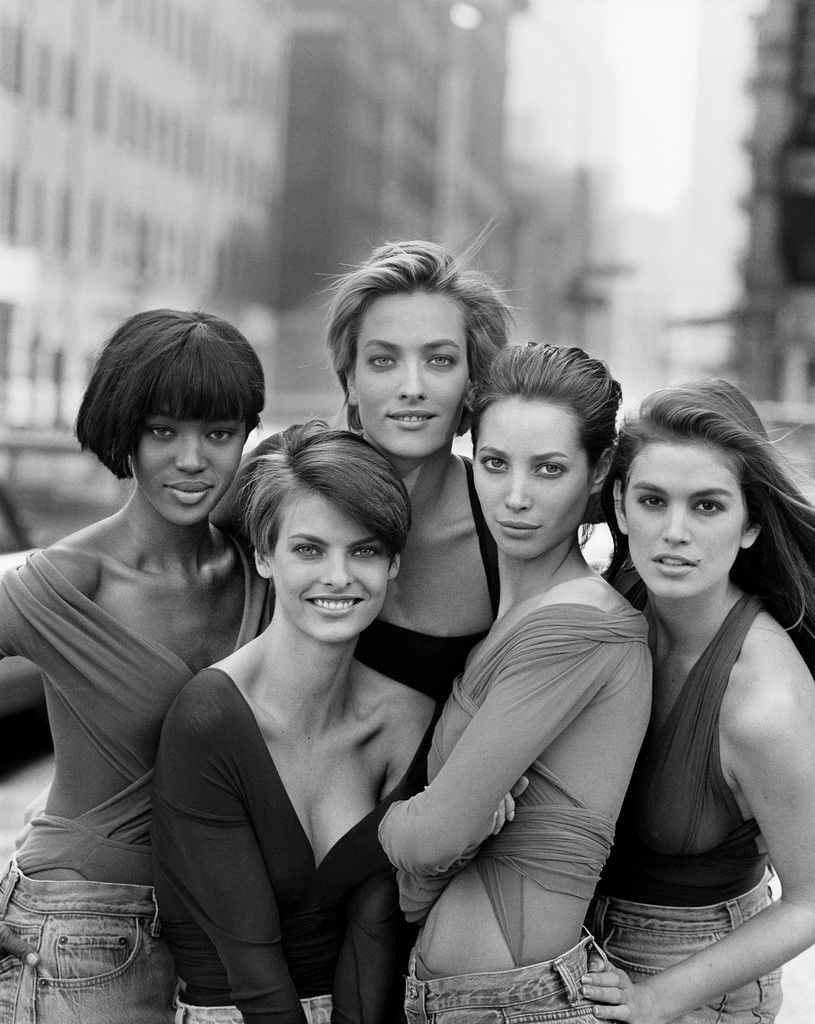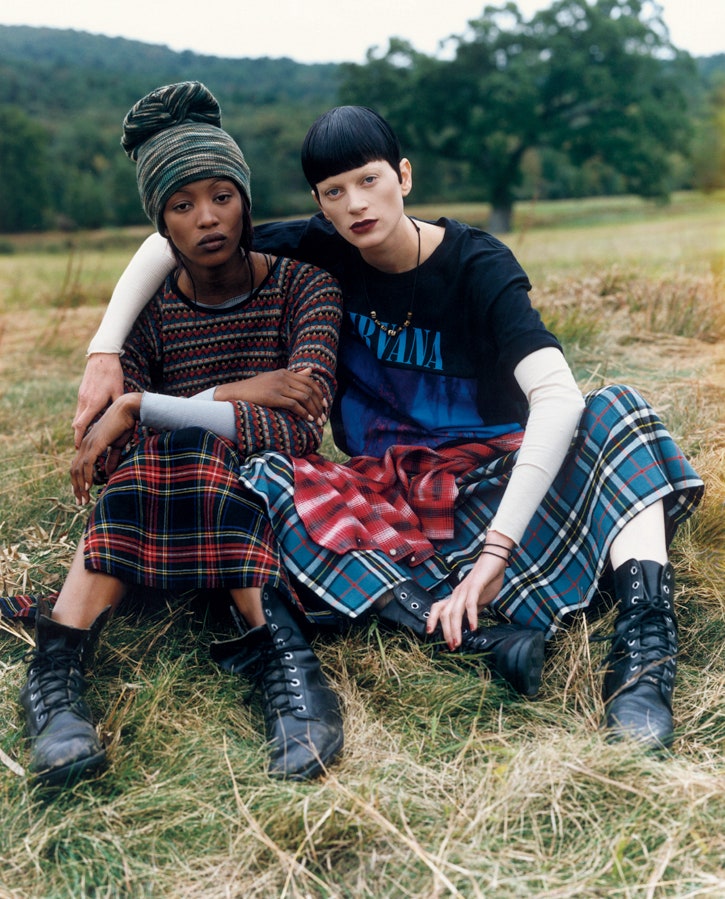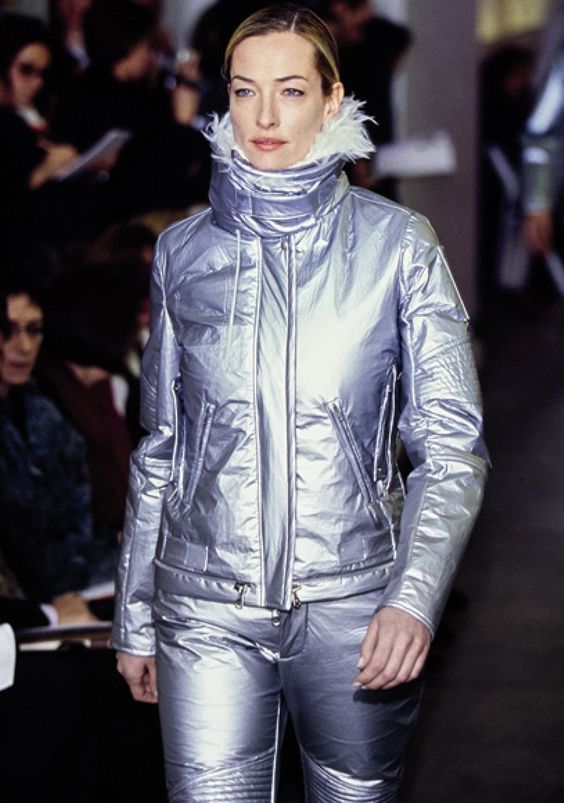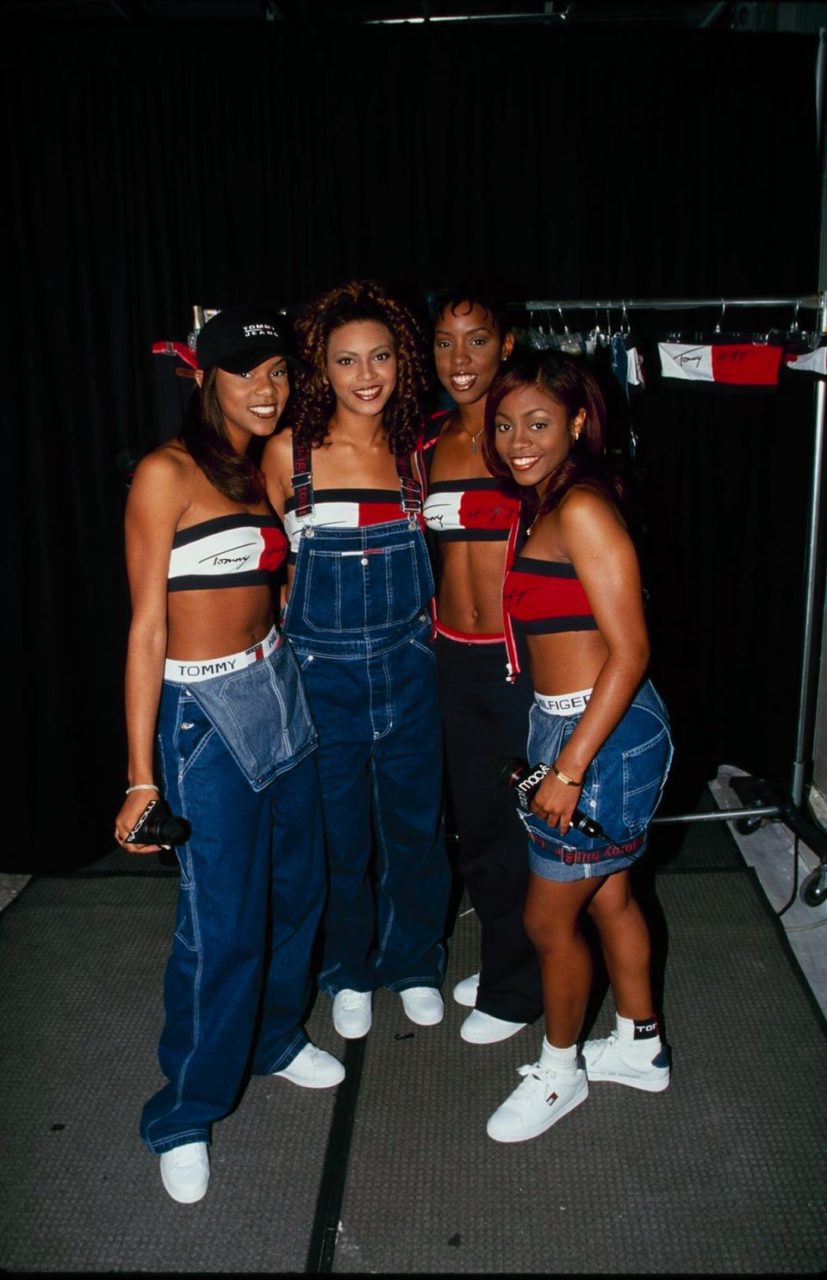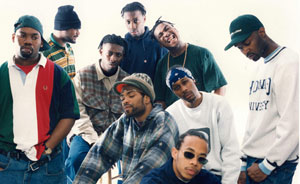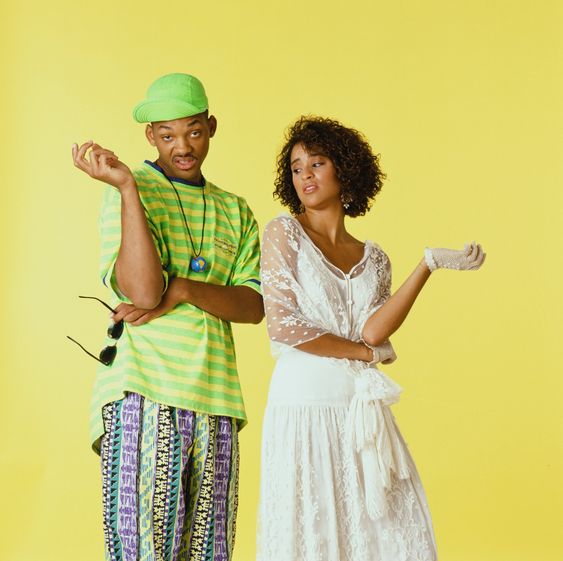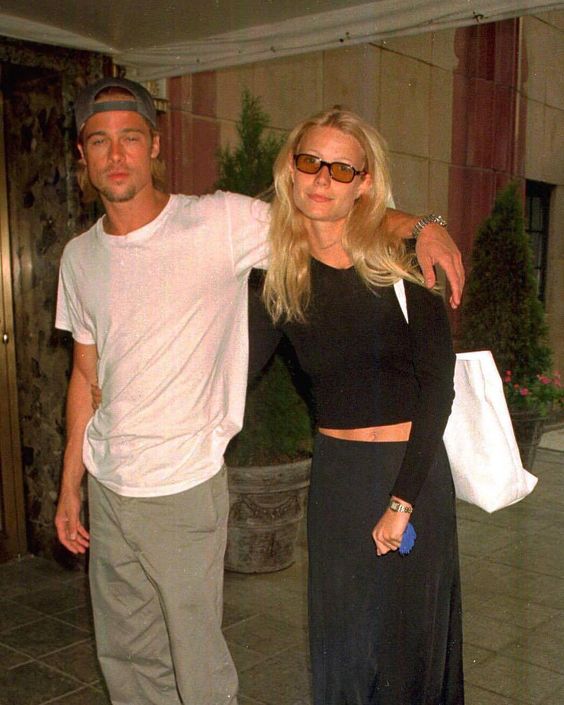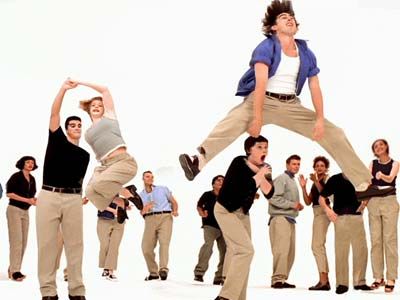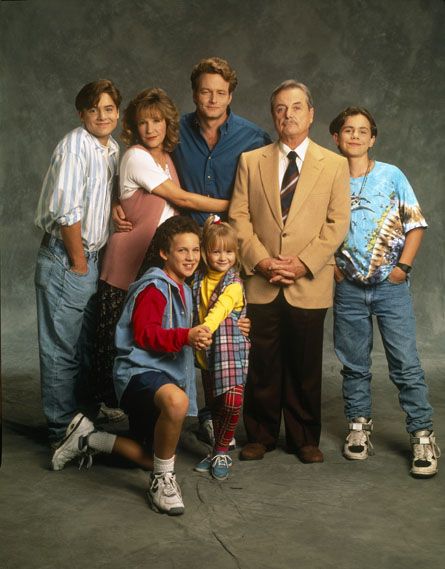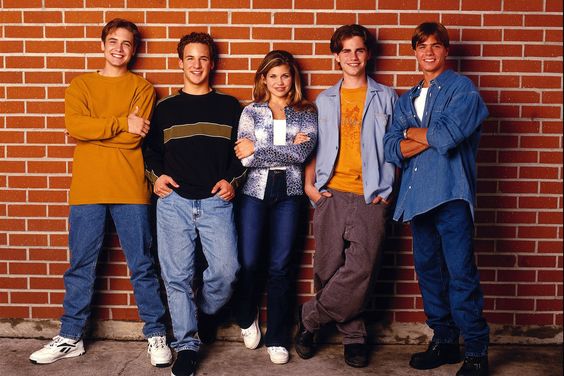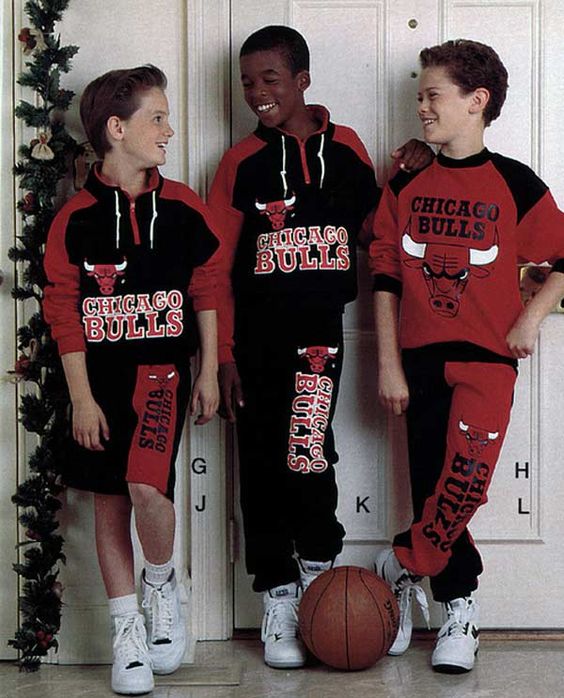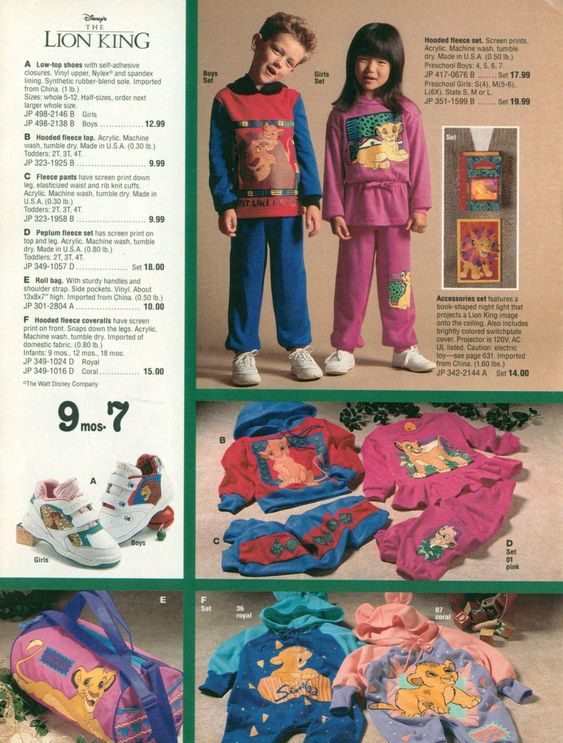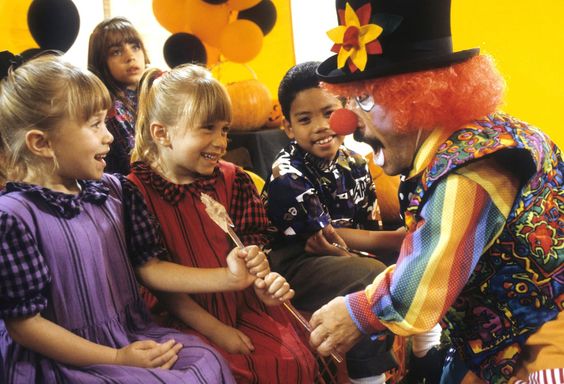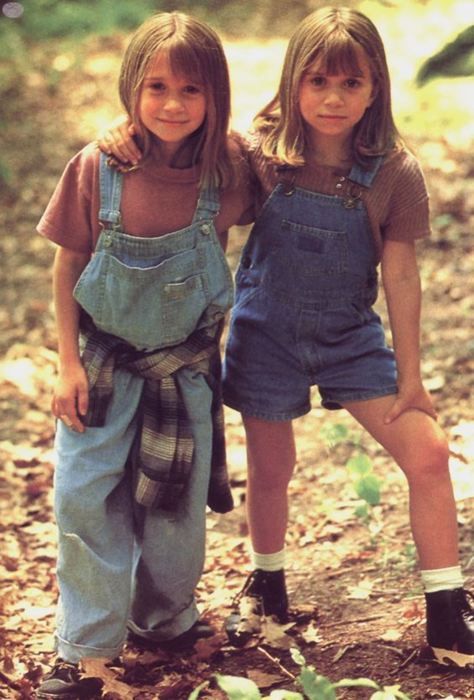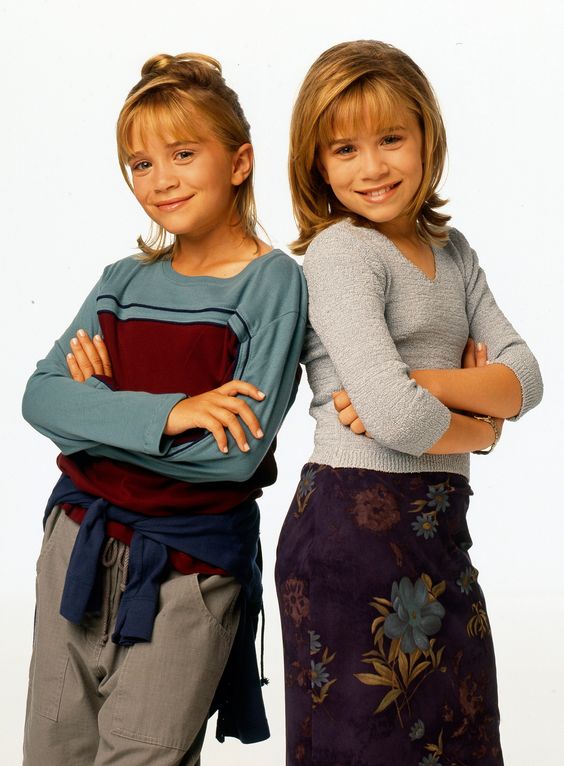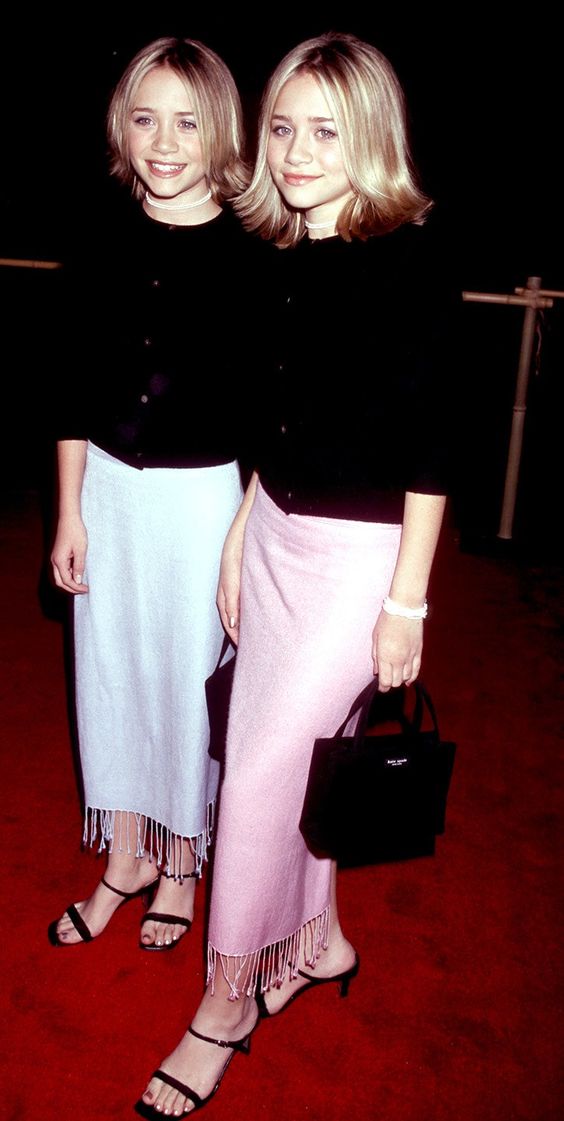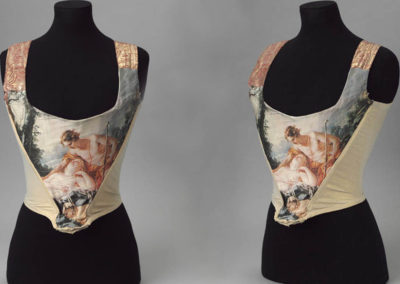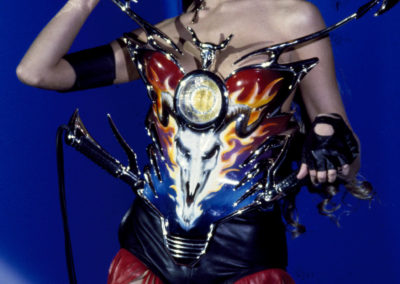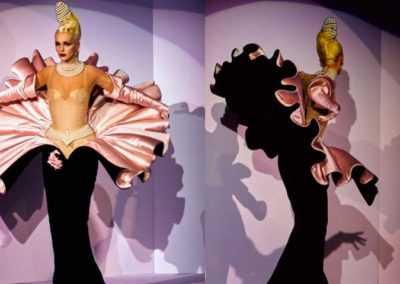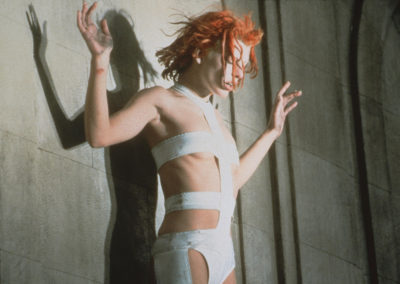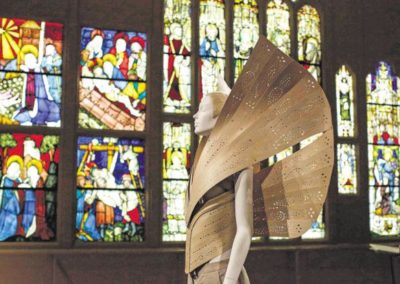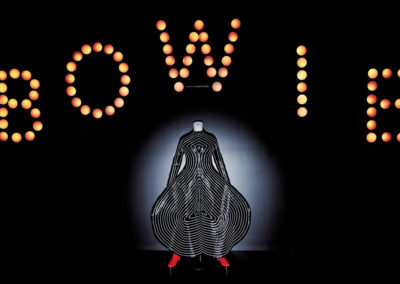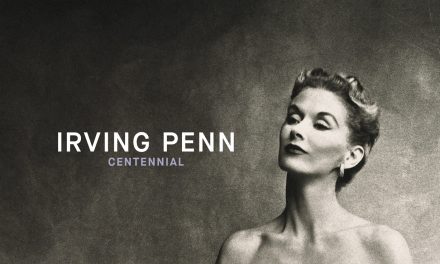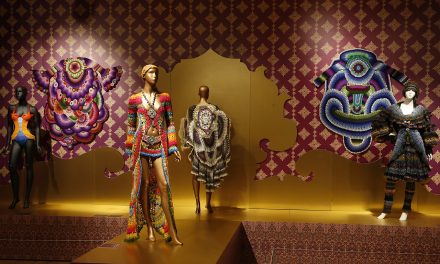OVERVIEW
As the 20th century came to a close, fashion reached its most casual. Both men and women adopted grunge fashion in the early part of the decade and loose, oversized clothing and jeans became staples. As the decade progressed, women’s fashion became more streamlined as minimalism became de rigueur, while children’s clothing often featured popular Disney characters.
Womenswear
In the final decade of the twentieth century, fashion continued to move towards a more casual style of dressing and minimalism. While there were periods of more formal dress, the twentieth century largely saw fashion moving towards a much more minimalist and casual style and as the eighties ended, this approach became widespread. By the end of the decade, it was clear that this approach to dressing was here to stay.
At the beginning of the decade, the high fashion supermodel peaked with models such as Cindy Crawford and Naomi Campbell pictured on the front of Vogue in 1990 (Fig. 1). Kathryn Hennessey writes in Fashion: The Ultimate Book of Costume and Style (2012):
“The phenomenon of the ‘supermodel’ reached its height in the 1990s and among the most celebrated were Linda Evangelista, Cindy Crawford, Naomi Campbell, and Christy Turlington. When these four strutted down the catwalk arm in arm during Versace’s 1991 Autumn/Winter fashion show in Milan they were more famous than the clothes.” (409)
While the decade began with the popularity of these high fashion and larger-than-life styles of the eighties, fashion quickly moved toward less glamorous and more casual dress.
Fig. 1 - Peter Lindbergh. Naomi Campbell, Linda Evangelista, Tatiana Patitz, Christy Turlington, Cindy Crawford for Vogue, 1990. Source: Artsy
Fig. 2 - Photographer unknown. Fashion Timeline, 1990s. Source: Pinterest
Fig. 3 - Steven Meisel (American, 1954-). Naomi Campbell and Kristen McMenamy in Perry Ellis, December 1992. Source: Vogue
Fig. 4 - Photographer unknown. Kate Moss, ca. 1990s. Source: Pinterest
The sportswear looks of the eighties continued into the early nineties with biker shorts, leggings, Keds, and oversized sweatshirts continuing to be favorite choices for young women. The early part of the decade also saw a revival of 1960s and 1970s styles such as mini-skirts, flares, and Punk styles (Laver 281).
The desire for vintage clothing encouraged the spread of second-hand clothing stores which were also used for the grunge fashion. A style that emerged in Seattle in the late 1980s, by the early nineties, it was a widespread look that was based on everyday clothing such as baggy, worn-out jeans, flannel shirts and Doc Martens boots (Fig. 2). For women, this also included simple slip dresses often worn with chunky boots. In 1993, grunge made it to the catwalk in Marc Jacobs’ collection for Perry Ellis (Hennessey 412; Figs. 3 and 5).
Along with the popularity of grunge came a shift away from the earlier popularity of supermodels to a new type of model epitomized by Kate Moss (Fig. 4). Moss became known for her “heroin chic” photoshoots in run down locations. Hennessey writes:
“It was out with the glossy and wholesome supermodels and in with a new breed of fragile, individual-looking, and often younger, models. A new phrase ‘heroin chic’ described the down-at-heel settings for fashion shoots presented in magazines. Such a dressed-down styles didn’t suit the personalities of the supermodels, and designers opted to make the clothes the star of the show once more” (409).
The casual grunge look didn’t work with the glamour of the supermodels while Moss’ waif-like thinness and delicacy enhanced the unkempt look that was popular in the early nineties.
In the mid-nineties, styles became more feminine again. Slip dresses epitomized the minimalist look during this period (Fig. 6). Silky versions were worn as formalwear (Fig. 7) while a popular daytime look was a slip dress over a white t-shirt. The “sexy schoolgirl” look as seen in movies like Clueless (Fig. 9) and later in the decade in Britney Spears’ “…Baby One More Time” music video became popular during the middle of the decade. Undersized sweaters, baby doll t-shirts and knee high socks all made up this look that was worn by young women.
Fig. 5 - Marc Jacobs for Perry Ellis Sportswear Inc. (American, 1963-). Ensemble, Spring/Summer 1993. Silk, mother-of-pearl, metal. New York: The Metropolitan Museum of Art, 2012.148a–c. Gift of Gabé Doppelt, in memory of Lucia Fine, 2012. Source: The Metropolitan Museum of Art
Fig. 6 - Gianni Versace (Italian, 1946–1997). Evening dress, 1996. Rhinestones, synthetic. New York: The Metropolitan Museum of Art, 1999.328.3. Gift of Donatella Versace, 1999. Source: The Metropolitan Museum of Art
Fig. 7 - Terry McGinnis. Gwyneth Paltrow and Brad Pitt at 68th Academy Awards, 1996. Source: Pinterest
Fig. 8 - Helmut Lang. The Helmut Lang Astro Moto jacket, Autumn/Winter 1999. Source: Pinterest
Fig. 9 - Costume design by Mona May. Alicia Silverstone and Stacey Dash in Clueless, 1995. Source: The Telegraph
Fig. 10 - Time & Life Pictures. Destiny's Child in Tommy Hilfiger, 1998. Source: Huffington Post
As the decade progressed, the casual style remained. Utilitarian styles such as cargo pants and The Gap’s sweatshirts became popular for everyday wear. Amy de la Haye and Andrew Tucker note in Costume and Fashion: A Concise History:
“American retailer The Gap, founded in San Francisco in 1969, universalized the popularity of garments such as the hooded sweatshirt and cargo pant (the latter contributing to a massive downsizing in the denim market), making once-basic items a wardrobe staple for all generations.” (Laver 284-285)
This was paralleled in high fashion as designers such as Helmut Lang put a fashion spin on styles such as parkas, combat trousers and other items worn by outdoor adventurers (Laver 284; Fig. 8). Along with this came a move towards logoed clothing. Tommy Hilfiger perfected this with casual clothing featuring heavy branding (Laver 286; Fig. 10).
With the new millennium looming, women’s fashion turned to a more bohemian style with influences from the 1970s. Embroidery, mixed fabrics and Eastern influences made their way into fashion once again. De la Haye and Tucker write:
“From 1996 to the end of the decade, the bohemian look became the overriding trend within womenswear at all market levels, incorporating the adapted ethnic embroideries of Belgian designer Dries Van Noten, the bold colour sense of young British designer Matthew Williamson and the irreverent mixtures of fabrics from Milanese design houses such as Marni and Fendi.” (Laver 288)
With the new casual, bohemian styles came low-slung jeans and crop-tops, which would be the hallmark of the coming decade.
Menswear
Like womenswear, in the 1990s menswear also became more and more casual. Jeans and untucked shirts became typical casualwear as trends in music like grunge, hip-hop and Britpop influenced styles throughout the decade.
In the early part of the decade, the sartorial influence of grunge bands like Nirvana and Pearl Jam pervaded. The look was simple: an oversized flannel shirt, sometimes worn over a t-shirt, and jeans. Other grunge styles included beanies, band t-shirts, knitted sweaters with patterns and Converse shoes. Nirvana’s Kurt Cobain epitomized the look with holes in his jeans and cardigan sweaters (Fig. 1). The overall look was disheveled and could be bought second-hand in a thrift store. Though it became a fashion trend, it was born of a desire to not engage with fashion at all.
Towards the mid-nineties, grunge began to fade in popularity, but the casual approach to fashion remained. Other styles of music, including hip-hop and rap, continued to influence fashion during this period. The popular styles to come from this predominantly included sportswear, including baseball caps and jackets, basketball shorts, tracksuits, and hoodies, but flannel shirts also carried over from grunge (Fig. 2). De la Haye and Tucker note the connection between sportswear and the more casual styles of the decade writing:
“The prevalence of urban sportswear in male dress can also be directly correlated to the increasingly informal approach to workplace clothing. Jeans and sweatshirts became acceptable during the mid-nineties in all but the most formal industries as ‘Friday wear’ began to extend its influence throughout the week.” (Laver 285)
Men’s fashion as a whole was simply more casual, allowing sportswear to become more acceptable for everyday wear.
Fig. 3 - Photographer unknown. The Fresh Prince of Bel-Air Promotional Image, ca. 1990s. Source: Scottish Sun
Fig. 4 - Photographer unknown. Dawson's Creek Promotional Image, ca. 1998. Source: Esquire
Fig. 5 - Photographer unknown. Brad Pitt and Gwyneth Paltrow in New York, 1995. Source: Pinterest
Other subcultures also heavily influenced fashion throughout the decade. The Britpop movement in music resulted in a revival of 1960s Mod styles while rave and clubwear included retro sportswear. Will Smith wore bright, zany colors and patterns on The Fresh Prince of Bel-Air alongside clothing influenced by hip-hop styles (Fig. 3). On the other end, preppy style continued from the 1980s which khaki pants, navy blazers and Oxford shirts continuing to be popular until the end of the decade.
Later in the decade, jeans were joined by khaki pants as a popular option for men. A “dressy casual” style emerged as jeans and khakis were worn with blazers and dress shirts for a hybrid formal look. Characters on Dawson’s Creek typified the late-nineties baggy look (Fig. 4) while Brad Pitt embraced the casual khakis and white t-shirt look (Fig. 5). In 1998, The Gap advertised khaki pants for both men and women in a striking commercial (Fig. 6). Around this time, untucked shirts also became the norm, while there was also a return to designers such as Ralph Lauren and Calvin Klein.
Fig. 6 - Gap. Khakis Swing, 1998. Source: Pinterest
CHILDREN’S WEAR
Like womenswear and menswear, children’s wear in the 1990s also saw casual styles prevail. Fashions for children largely followed those of adult’s with flannels, jeans, and The Gap all playing a prevalent role in nineties children’s styles. Shows like Boy Meets World, which ran from 1993 to 2000, grew up with the characters and demonstrate the progression of styles for young people. While the girls’ fashion varied more, boys’ fashion maintained a theme of baggy jeans and loose shirts, often layered (Figs. 1-2).
Young boys and girls in the 1990s wore casual styles throughout the decade. Jeans with flannels or sweatshirts worn over turtlenecks were popular in the early part of the decade for both boys and girls. Layers were especially prominent, as were denim accents (Fig. 3).
Sportswear was also popular for children with Champion sweatshirts and track suit jackets popular styles. Team pride could be on full display as boys could find tops and bottoms with their team logo (Fig. 4). Babydoll dresses were a favorite of young girls during the early part of the decade.
For both boys and girls, logoed t-shirts and sweatshirts were wardrobe staples. Some of Disney’s most famous animated films came out during the early to mid-nineties and many children wore clothing themed around movies such as The Lion King, The Little Mermaid, Beauty and the Beast, and Aladdin (among others) throughout the early part of the decade (Fig. 5). Later in the decade, The Gap’s branded sweatshirt was nearly ubiquitous.
Fig. 3 - JC Penney. Christmas Book, page 146, 1994. Source: Pinterest
Fig. 4 - Photographer unknown. Boys Chicago Bulls Clothing, 1991. Source: Pinterest
Fig. 5 - JC Penney. Christmas Catalog, 1994. Source: Pinterest
FASHION ICONS: Mary-Kate and Ashley Olsen
Fig. 1 - Photographer unknown. Mary-Kate and Ashley Olsen in Double, Double, Toil, and Trouble, 1993. Source: Pinterest
Fig. 2 - Photographer unknown. Mary-Kate and Ashley Olsen in It Takes Two, 1995. Source: Pinterest
T hough music had a huge impact on adult style in the nineties, children’s fashion often looked to movies and television. For girls, a powerful influence throughout the decade was Mary-Kate and Ashley Olsen. From matching outfits in early 1990s films like Double, Double, Toil, and Trouble (Fig. 1) to more distinctive looks as they grew older to their red carpet looks, the pair were an inspiration to many young girls growing up throughout the decade.
In the early part of the decade, the twins were often dressed in matching or coordinating outfits. In addition to wearing bright dresses, they also wore the typical casual styles such as overalls (Fig. 2). As they grew older, the girls and their characters began to wear more distinctive outfits (Fig. 3). In mid- to late-nineties movies like Billboard Dad and Passport to Paris, along with their late-nineties TV show Two of a Kind, Mary-Kate preferred pants and “tomboy” outfits while Ashley favored dress, skirts, and more feminine styles (Fig. 4). This allowed the twins to appeal to a wide range of personalities.
Mary-Kate and Ashley had firmly established themselves as style icons by the end of the nineties. They had grown up throughout the decade and their style had grown with them. Young girls followed both their characters’ styles and clothes worn by them on the red carpet (Fig. 5). By the end of the decade, they even had a line of clothing at Walmart so that young girls could continue to emulate their style.
Fig. 3 - Photographer unknown. Mary-Kate and Ashley Olsen at the premiere of Alaska, 1996. Source: Pinterest
Fig. 4 - Photographer unknown. Mary-Kate and Ashley Olsen in Two of a Kind, 1998-1999. Source: Pinterest
Fig. 5 - Photographer unknown. Mary-Kate and Ashley Olsen at the premier of Anna and the King, 1999. Source: Pinterest
References:
- “1990s Fashion: A Brief History of What We Wore.” CNN Style, April 30, 2020. Accessed June 23, 2020. https://edition.cnn.com/style/article/1990s-fashion-history/index.html
- “1990s in Fashion.” Wikipedia. Accessed June 23, 2020. https://en.wikipedia.org/wiki/1990s_in_fashion.
- “Grunge Fashion.” Wikipedia. Accessed June 23, 2020. https://en.wikipedia.org/wiki/Grunge_fashion.
- Hennessey, Kathryn. Fashion: The Ultimate Book of Costume and Style. London: Dorling Kindersley, 2012. http://www.worldcat.org/oclc/816318024.
- Ilyashov, Alexandra. “The Olsen Twins’ Ex Stylist Tells All.” Refinery29, April 5, 2017. Accessed June 23, 2020. https://www.refinery29.com/en-us/2017/04/148569/olsen-twins-stylist-child-stars-clothing-line.
- Laver, James, Amy De La Haye and Andrew Tucker. Costume and Fashion: A Concise History. 5th ed. New York: Thames & Hudson, 2012. http://www.worldcat.org/oclc/966352776.
- Victoria and Albert Museum. “Introduction to 20th-Century Fashion.” Accessed August 31, 2019. http://www.vam.ac.uk/content/articles/i/introduction-to-20th-century-fashion/.
Historical Context
Wikipedia: 1990-1999
Events:
- 1990 – Madonna creates a fashion sensation when she wears the notorious Jean Paul Gaultier corset during her Blonde Ambition World Tour. Vera Wang opens her own design salon in New York, featuring her trademark bridal gowns. Fashion models become increasingly successful and recognizable; the age of the supermodel begins.
- 1991 – Vivienne Westwood wins the British Fashion Award for Designer of the Year.
- 1991 – Rifat Ozbek’s all-white New Age collection is launched. It is viewed as a backlash against the 1980s and a spiritual new dawn for fashion at the beginning of a new decade. Nirvana releases its “Smells Like Teen Spirit” single, which is a big influence on “grunge” style.
- 1992 – Marc Jacobs wins the Council of Fashion Designers of America’s award for Women’s Designer of the Year. He is later dismissed from Perry Ellis for designing a “Grunge” collection.
- 1994 – Tom Ford becomes creative director of Gucci.
- 1995 – Friends actress Jennifer Aniston debuts “the Rachel haircut.” It is copied around the globe.
- 1996 – John Galliano begins as head designer at the House of Dior.
- 1997 – The Fendi Baguette Bag emerges. It is the first of the designer “it bags” and becomes an overnight sensation.
- 1997 – Italian fashion designer Gianni Versace is murdered outside his Miami Beach home; his sister Donatella Versace becomes head of design at Versace
Timeline Entries
Primary/Period Sources
Resources for Fashion History Research
To discover primary/period sources, explore the categories below.
Have a primary source to suggest? Or a newly digitized periodical/book to announce? Contact us!
Periodicals (Digitized)
Filmography
Secondary Sources
Also see the 20th-century overview page for more research sources... or browse our Zotero library.


